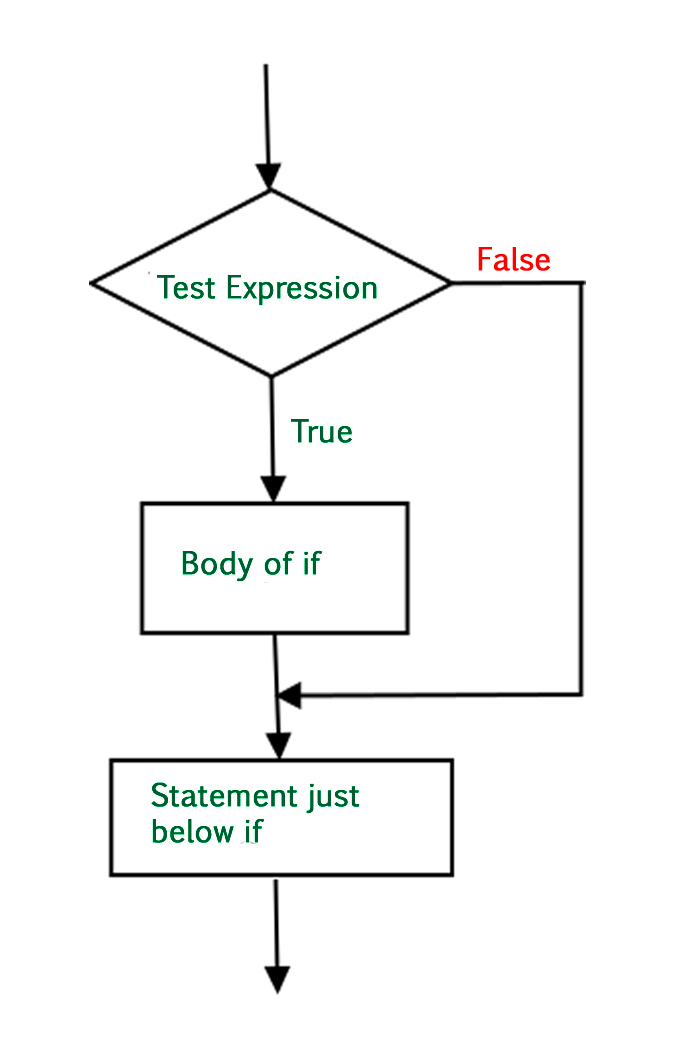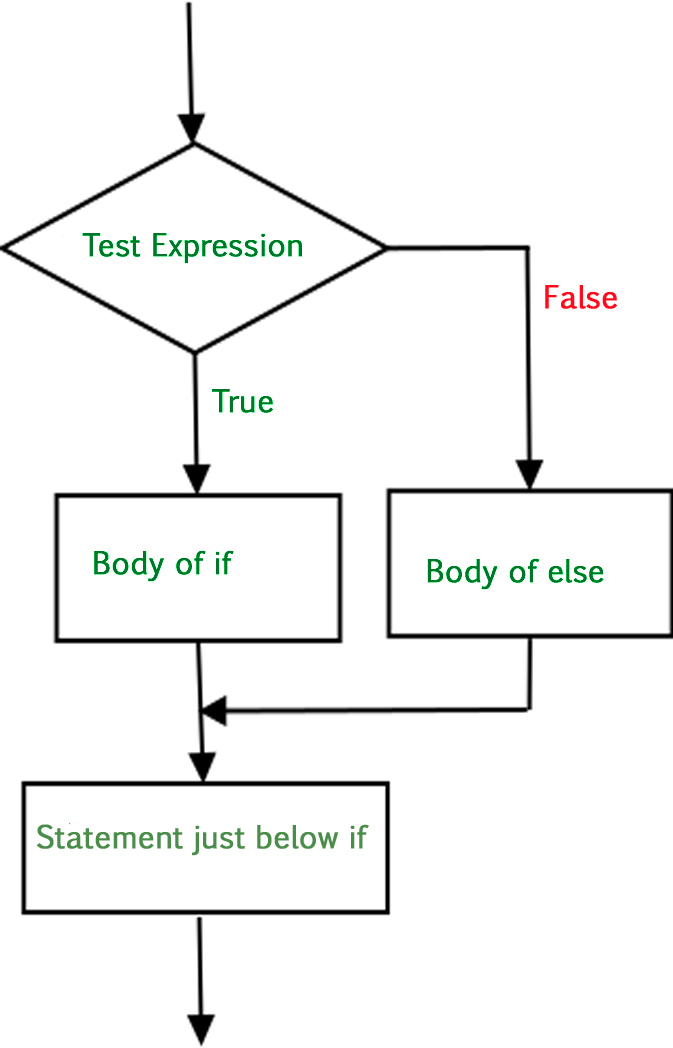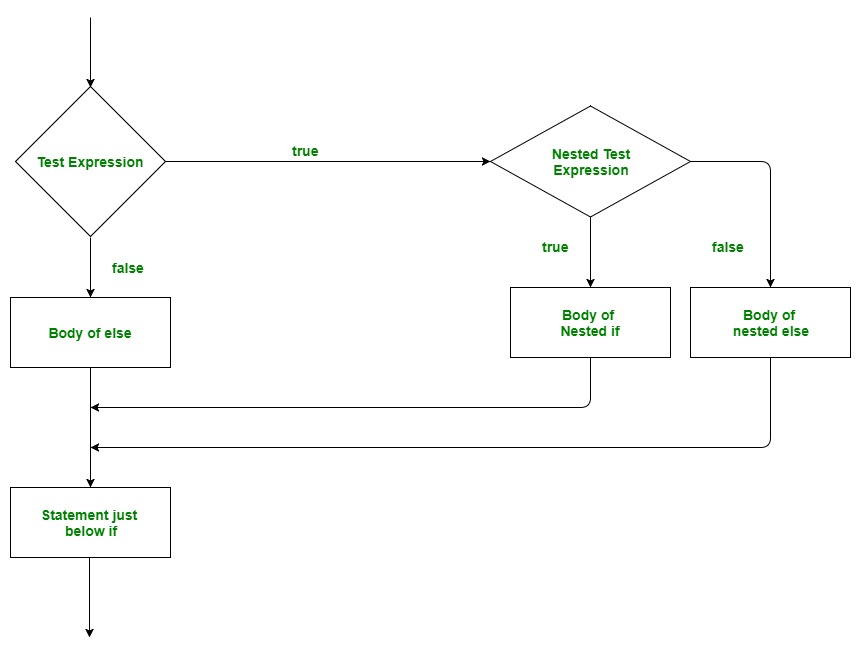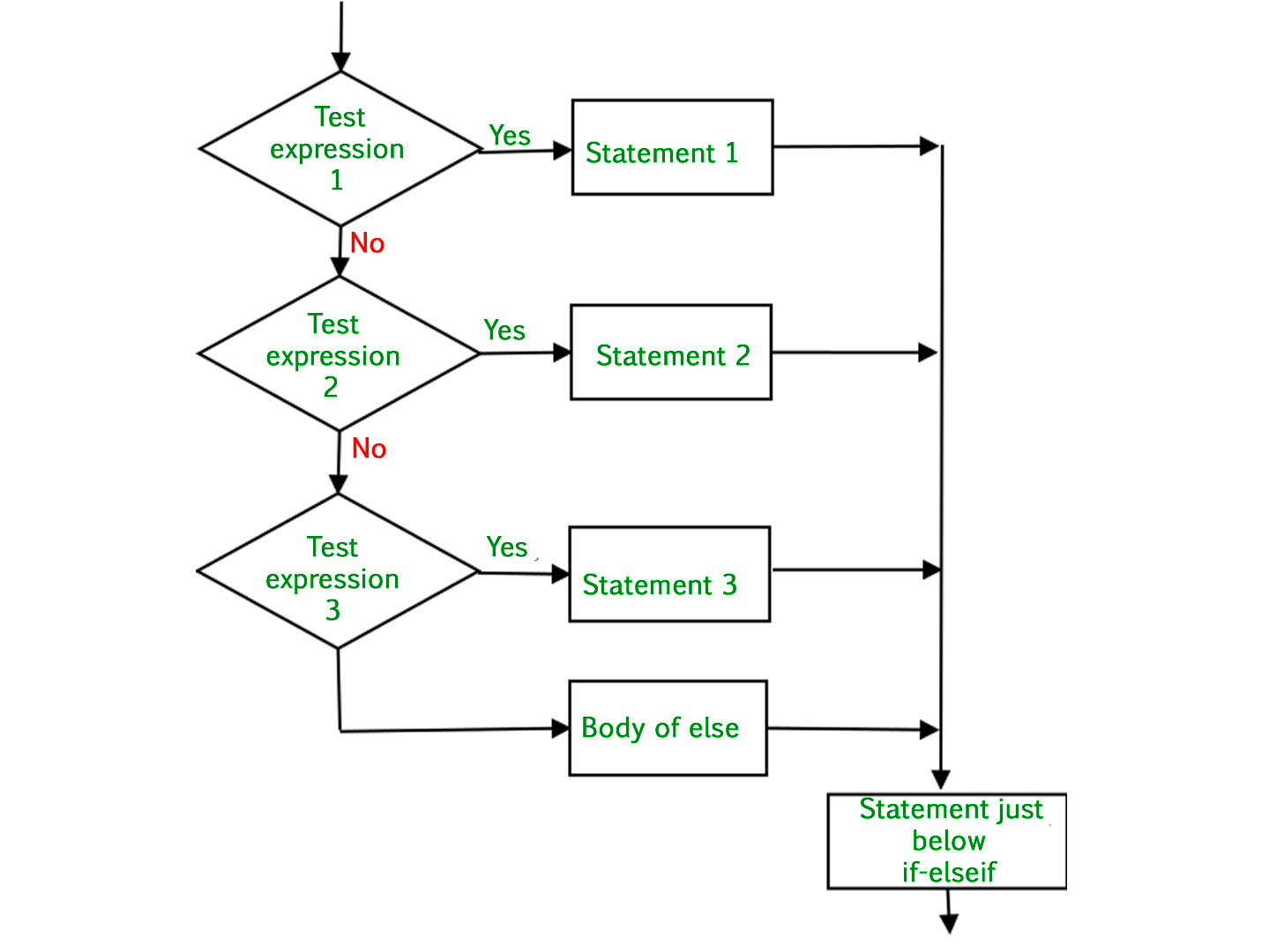在现实生活中, 有时候需要做出一些决定, 然后根据这些决定来决定下一步该做什么。在编程中也会出现类似的情况, 我们需要做出一些决策, 然后基于这些决策, 我们将执行下一段代码。
编程语言的决策陈述决定了程序执行流程的方向。 python中可用的决策语句为:
- if声明
- if..else语句
- 嵌套if语句
- if-elif梯子
- 简述if
- 简短的if-else声明
if声明
if语句是最简单的决策语句。它用于决定是否执行某个语句或语句块, 即, 如果某个条件为真, 则执行语句块, 否则不执行。
语法:
if condition:
# Statements to execute if
# condition is true在此, 评估后的条件为真或假。 if语句接受布尔值-如果该值为true, 则它将执行其下面的语句块, 否则不执行。我们可以用健康)状况加上方括号"(‘’)"。
众所周知, python使用缩进来识别块。因此, 将确定if语句下的块, 如以下示例所示:
if condition:
statement1
statement2
# Here if the condition is true, if block
# will consider only statement1 to be inside
# its block.流程图:-

# python program to illustrate If statement
i = 10
if (i > 15 ):
print ( "10 is less than 15" )
print ( "I am Not in if" )输出如下:
I am Not in if由于if语句中存在的条件为false。因此, 不执行if语句下面的块。
如果别的
仅if语句就告诉我们, 如果条件为true, 则将执行语句块;如果条件为false, 则不会。但是如果条件为假, 我们想做其他事情怎么办。某物(人)到了
其他
声明。我们可以使用
其他
声明
if
条件为false时执行代码块的语句。
语法
:
if (condition):
# Executes this block if
# condition is true
else:
# Executes this block if
# condition is false流程图:-

# python program to illustrate If else statement
#!/usr/bin/python
i = 20 ;
if (i < 15 ):
print ( "i is smaller than 15" )
print ( "i'm in if Block" )
else :
print ( "i is greater than 15" )
print ( "i'm in else Block" )
print ( "i'm not in if and not in else Block" )输出如下:
i is greater than 15
i'm in else Block
i'm not in if and not in else Block在调用不在块中(无空格)的语句后, 如果if语句中的条件为false, 则执行else语句之后的代码块。
嵌套如果
嵌套的if是if语句, 它是另一个if语句的目标。嵌套的if语句表示另一个if语句内的if语句。是的, Python允许我们在if语句中嵌套if语句。也就是说, 我们可以将if语句放在另一个if语句中。
语法:
if (condition1):
# Executes when condition1 is true
if (condition2):
# Executes when condition2 is true
# if Block is end here
# if Block is end here流程图:-

# python program to illustrate nested If statement
#!/usr/bin/python
i = 10
if (i = = 10 ):
# First if statement
if (i < 15 ):
print ( "i is smaller than 15" )
# Nested - if statement
# Will only be executed if statement above
# it is true
if (i < 12 ):
print ( "i is smaller than 12 too" )
else :
print ( "i is greater than 15" )输出如下:
i is smaller than 15
i is smaller than 12 tooif-elif-else梯子
在这里, 用户可以在多个选项中进行选择。 if语句从上至下执行。一旦控制if的条件之一为true, 则将执行与if关联的语句, 并跳过其余的阶梯。如果没有一个条件为真, 则将执行最终的else语句。
语法:-
if (condition):
statement
elif (condition):
statement
.
.
else:
statement流程图:-

例:-
# Python program to illustrate if-elif-else ladder
#!/usr/bin/python
i = 20
if (i = = 10 ):
print ( "i is 10" )
elif (i = = 15 ):
print ( "i is 15" )
elif (i = = 20 ):
print ( "i is 20" )
else :
print ( "i is not present" )输出如下:
i is 20简述if
只要在if块中只有一条语句要执行, 则可以使用简写if。该语句可以与if语句放在同一行。
语法如下:
if condition: statement例子:
# Python program to illustrate short hand if
i = 10
if i < 15 : print ( "i is less than 15" )输出如下:
i is less than 15简短的if-else声明
这可以用于在单行中编写if-else语句, 在if和else块中只有一个语句要执行。
语法如下:
statement_when_True if condition else statement_when_False例子:
# Python program to illustrate short hand if-else
i = 10
print ( True ) if i < 15 else print ( False )输出如下:
True注意怪胎!巩固你的基础Python编程基础课程和学习基础知识。
首先, 你的面试准备可通过以下方式增强你的数据结构概念:Python DS课程。

![从字法上最小长度N的排列,使得对于正好为K个索引,a[i] a[i]+1](https://www.lsbin.com/wp-content/themes/begin%20lts/img/loading.png)